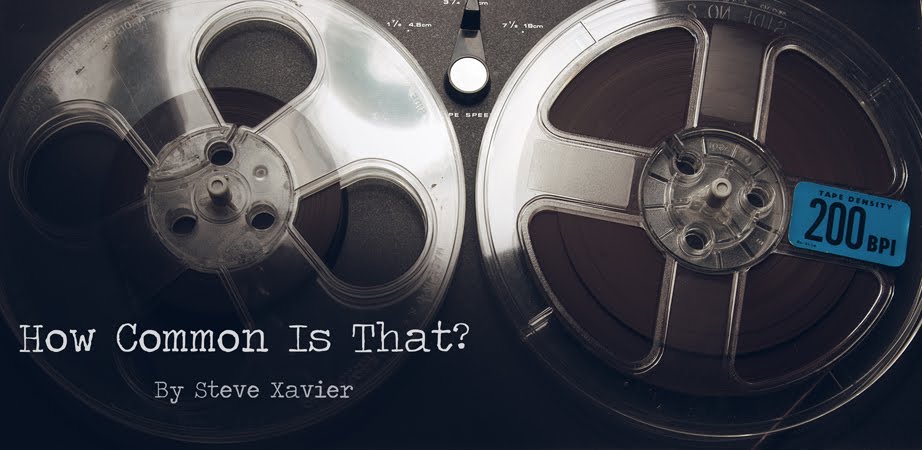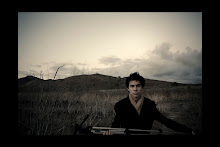 Recently I came upon the obsession of tape machines, like this one. I had to buy another one so I could fix this one.
Recently I came upon the obsession of tape machines, like this one. I had to buy another one so I could fix this one.The other one was pretty cool, but didn't have the functions I wanted. It had two speakers (sort of rare) on either side of the tape machine. So naturally after I stripped the tape machine of its parts to fix the one above, I just took the whole tape machine out and decided to build a stereo w/ FM/AM capabilities. The tape machine left a pretty good size space, which would be able to fit records. I needed to put in a control surface where all the electronics hide, so I decided that would go vertical on the left so the records could still all fit.

The second tape player above is the one I took out and left the speakers. Now, since I didn't feel like stripping out all of the individual circuits from the tape machine to compile an auxiliary input as well as a radio, I just decided to go to Urban Ore (thrift store) where I got the tape machines and buy a tiny radio. Remember, the only thing that I have left of the tape machine to the left is the speakers. The middle part is all gone and sitting in an ugly junk like pile on my work bench.
After I pulled that thing out I noticed a schematic of the machine glued to the wood behind it. A lot of help that did me... Well, actually, it did help. I'll get to that in a bit. First let me tell you how I turned the radio/cassette player into a radio/stereo input.
On top of this little radio was a cassette player, so I ripped that off and cut the wires. (Maybe a little more systematic than that.) I noticed that there was no on button for the tape player, but when you pressed play, it would connect the power and turn the player on. I soldered these together so the unit was always on. The radio would switch on when you switched from tape to radio. So now I had to take the input of the power and run it through a switch that I stripped from the tape machine. Actually, that's not true, I found a switch in the back that toggled between A/C current and D/C current (wall powered or battery powered) So I took that switch and used it as the power, since there would be no batteries, the unit would automatically shut off. It probably would have been better if I did what I mentioned before, but who really cares.
The next thing I had to do was take the input to the tape machine and connect an 1/8" stereo jack (headphone jack perhaps). This was pretty easy, but then I realized that the difference between tape and a direct input was about 50+dB (volume doubles every 3dB, so this was about 2^16th (65,536) times as loud as I wanted it to be.) This resulted in a very loud input, and it would distort if anything was over the quietest level known to man. Since I knew how to make a 20dB pad off the top of my head (-20dB) then I just made two so that the signal would reduce by 40dB. (So since we had 50+dB coming in, and I turned it down 40dB, the level is still loud coming in, but not unbearable.)
How do you make a 20dB pad? (You can definitely skip to the next paragraph if you don't care.) Simple. A quick answer, two 1K ohm resistors in parallel while you bridge the two with a 150 ohm resistor on the outgoing side. Know that I think about it, I do know the exact math and should have just made only one pad, of 50 or so dB. Anyways, here's the math, have fun; Attenuation = (R1 + 2(R2)) / R1. Attenuation, by the way, just means turned down. So my pad will attenuate by 40dB.
Oh, something I forgot to mention, I just hooked those speakers from the tape machine up to the wires that were connected to the radio speakers. (You NEED to get a radio and/or cassette player that has two speakers, otherwise there are not enough amplifiers in the circuit and you will either have mono or nothing.)
I felt like this wasn't enough, so I took the VU meters from the tape player (You can see them if you click on the image) and tried to put them in. This is where that old schematic came in handy. Turns out you can't just put those things on the plus and minus wires of each speaker. You can if the speaker isn't attached, but then what's the point, you're monitoring a level that you can't hear. So you have to build a VU meter amplifier, something I took WAY too long to find. The tape machine had a less than perfect solution, which was a diode on the positive side of the meter and a capacitor stretched from positive to negative. Unfortunately, this thing was so old that I broke exactly 1 diode and 1 capacitor in the process of removing them. Radio shack sells diodes and capacitors for about $120981209383410 each.
Let me say this; if you don't build the proper VU meter amp, you're meters will not register the correct frequencies and they will NOT be accurate. This was just a project for my girlfriend, so I stuck a little diode on there without the capacitors, and now the meters read about 64Hz, which is about the lowest frequency a kick drum makes, so those meters bump up and down nicely to the music, and overload if there's anything too bassy that might hurt those little old speakers. You can find a proper VU meter amp here.
So that ended up looking something like this.
This picture doesn't show the VU meters properly attached. I didn't put them on the speaker wire, but rather off of the output jack from my radio/cassette player circuit. A headphone jack isn't useful in my case because anything that will be playing through those speakers will come from the headphone jack of the source, i.e. the record player preamp, the ipod, etc.
Well, it looks like a mess, and I still need to put it all together, but it does work, and I'm very happy!
P.S. I majorly burned myself with the soldering iron and cauterized my skin almost instantly. Please be extremely careful while doing any soldering. Always keep a window open and a small fan going so you don't breathe in the solder fumes. (You'll have the worst headache of your life, trust me.) And for those solder burns, always have Melaleuca oil sitting around because that's the worst burn I've ever had, but the combination of cauterizing it and applying the oil relieved all of the pain. I could poke it in 15 minutes and not feel a thing.



No comments:
Post a Comment